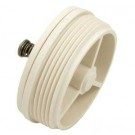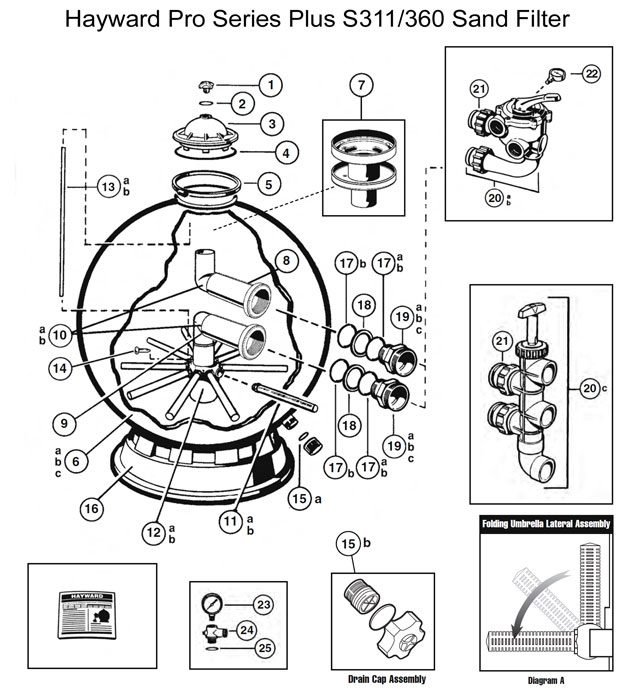OTO (Orthotolidine) Test
The OTO (Orthotolidine) test is an older type of test kit that is not widely used any longer since DPD has become so prevalent. OTO
is a solution that turns yellow when added to chlorinated water. The darker it turns, the more chlorine is in the water. If the chlorine level is really
high, then the sample will turn brown.
One benefit of this type of test is that it does not bleach out in the presence of high levels of chlorine.
The blue Guardex test kit is one example of this test.
TEST PROCEDURE: Fill the vial to the specified level with pool water. Add five drops of the OTO solution and compare the
color with the sample colors on the test vial. Read and follow label directions on the kit.
DPD Colorimetric Test
The DPD test is the most common type of chlorine test that utilizes two reagents (test chemicals). The DPD test solution will turn
reddish in the presence of chlorinated water. The darker it turns, the more chlorine is in the water. If the chlorine level is excessively high (25-30 ppm
or more) the color in the sample will bleach out and the sample will turn clear, making it look like there is no chlorine in the water!! This is the one downside
to this test.
IF YOU SUSPECT THAT THERE IS CHLORINE IN THE WATER, AND YET THE SAMPLE TURNS UP CLEAR, DILUTE THE SAMPLE WITH THREE PARTS TAP WATER AND
RE-TEST. IF THE TEST SHOWS THAT THERE IS INDEED CHLORINE IN THE WATER, THEN CLOSE THE POOL UNTIL THE LEVELS COME DOWN TO BELOW 10 PPM.
The Taylor 2004 test kit is the most common form of DPD test.
TEST PROCEDURE: Fill the vial to the specified level with pool water. Add five drops of R-0001, then add five drops of R-0002
and compare the color with the sample colors on the test vial. If the color exceeds the 5.0 ppm color on the samples, then use the DPD Titration test to get a
more precise reading. If the drops of R-0002 turn red for a split second when they hit the sample and then turn clear again, then your sample is probably
bleaching out due to extremely high levels of chlorine. Close the pool until an exact reading can be obtained and the actual chlorine level in the pool can be
brought down below 10 ppm. Read and follow label directions on the kit.
DPD Titration Test
The DPD Titration test is a form of the DPD chlorine test that allows the user to get very precise readings on the chlorine. Since
the state pool codes specify a maximum of 9 ppm for the chlorine level, this test is necessary to demonstrate compliance.
The Taylor 2005 test kit is a common form of this test. Actually the 2004 test kit can be converted to perform this test by simply
including a vial of the chlorine titration powder.
TEST PROCEDURE: Fill the vial to the specified level with pool water. Add two “mini-scoops” of the titration powder
and mix until it is dissolved. Add R-0001 drop by drop until the color turns from red to clear. Count the drops to determine the exact level of chlorine in
the water. Read and follow label directions on the kit.

































